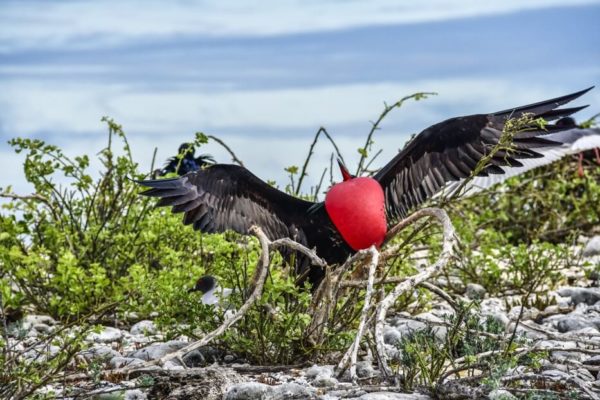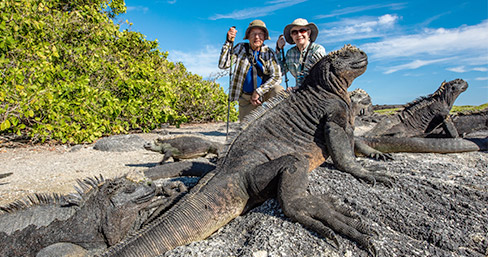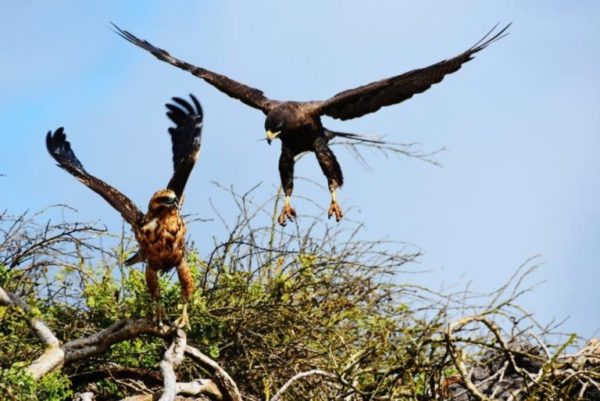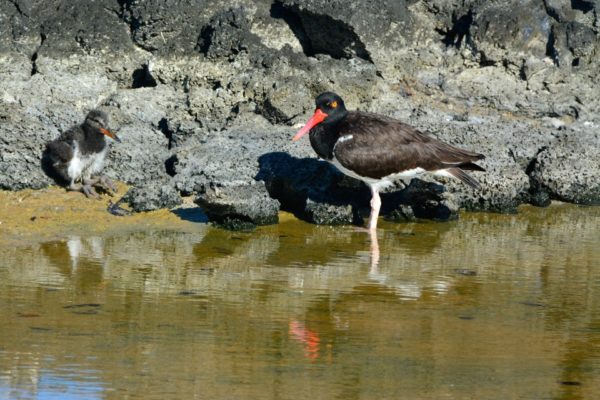A Brief Review of The Blue-footed Booby Chicks!

Do you like cuddly, fuzzy baby birds? If so, you’re going to adore what the breezes of July are bringing with them. If you know anything about the enchanted Galapagos Islands, you’ve undoubtedly heard of some of the Big 15 species that call them home, including the famous blue-footed booby, the frigate, and the Galapagos giant tortoise. Among the most common members of the booby family, this lovely bird is especially well-known for the striking blue color of its feet and its humorous mating dance. While Nazca boobies may lay two eggs, Red-footed boobies can only lay one. However, with the latter, siblicide—the act of one sibling killing the other to preserve its own existence—occurs, resulting in the survival of only one young. Conversely, blue-footed boobies can lay as many as three eggs! And all three stand a chance of survival unless there are hawk-eye predators around. Nonetheless, evolution follows the principle of “survival of the fittest,” and life on the Galapagos Islands is always evolving. Prepare your camera in case you happen to encounter any of these tiny birds while on a Galapagos cruise and are sailing around the archipelago!
It’s quite possible that you may see blue-footed boobies with their nests when visiting the Galapagos [/caption]
Sleek to Fluffy
A baby blue-footed booby has no feathers when it is hatched. It is extremely susceptible to the intense heat and burning tropical sun because to its exposed skin. Until the chick grows its first down feathers, the parent places it on top of its chilly feet, shielding it from the sun with its body. The chick will eventually begin to grow down feathers after the first several days, which will give it the adorable, fluffy appearance that everyone adores. Though the chick doesn’t really look larger than its parents, its down feathers could become quite large and fluffy. It’s down feathers gradually transform into juvenile plumage during the third week. Still, they don’t have a particularly attractive appearance. The ugly phase of the blue-footed booby chick’s life cycle really occurs between weeks five and nine. It also doesn’t look good to have a mixture of young feathers, old down feathers, food crumbs, and guano. By week 10, the percentage of adolescent dads is about 90%. It will not shed its juvenile coat and grow into an attractive adult plumage until after a year. Furthermore, what’s more? It will not be able to obtain its blue feet for another six months!
The Blue-Footed Booby’s Nesting Area: The Guano Ring
As soon as the eggs hatch, every chick has the identical appearance. Due to its poor sense of smell, the blue-footed booby must find a different method of identifying its baby amid the multitude of others. They use the guano ring as a result. Although it doesn’t sound very lovely, the visual aid it provides is rather helpful. After settling on a pleasant, level area of the ground, the mature blue-footed booby spends the entire day there, rotating on its own axis and excreting white guano as it does so. Guano circle is formed by this circular motion, which serves as a frontier to demarcate its domain and a place for future offspring to nest. Blue-footed boobies can identify which guano ring belongs to them since they do possess a visual memory. It will recognize which chicks to feed by feeding just those inside its ring when it comes to raising its young. During the hatching and nesting season, the guano ring is the only tool utilized to designate territory.

Guano ring. Images courtesy of Natalie Moeller
The Journey of Blue-Footed Booby Chicks Inside and Outside the Ring
A mother blue-footed booby lays three eggs; however, she does not lay them all at once. Typically, the eggs are deposited four to five days apart. When the eggs hatch, the chicks don’t appear to vary from one another after a 4- or 5-day interval. But since they develop so quickly, physical distinctions become apparent at 3 weeks. The eldest are usually much bigger than the youngest. The instinct of blue-footed booby chicks keeps them inside the ring until their fourth week. They have already mastered the ability to recognize the nest both geographically and visually by the end of the fourth or sixth week. A chick that is pushed or strays from its nest for any cause will be quickly taken by frigate birds, Galapagos hawks, and mockingbirds, who are constantly searching for abandoned or straying young. When a young booby is left alone in its nest, even for a minute while its parents switch positions, a mockingbird will quickly find it and bring it back before the adult can. Natural selection is determined by the chicks’ ability to survive the succession of threats to which they are exposed. The most intelligent and powerful individuals flourish, while the least intelligent and weakest individuals die.

The food that blue-footed boobies eat gives them the hue of their distinctive feet.
RELATED STORIES

Interesting facts about the three types of boobies in the Galapagos

Food on a Galapagos Cruise: We’ve Got You Covered

My Favourite Sea Turtle Experience Aboard the Santa Cruz II

First Day Aboard the Santa Cruz II

North Seymour Frigates and Boobies

Ecuador Facts (Vol. I): An Interesting Collection of Natural Wonders and Achievements

Galapagos Experience Testimonial

Galapagos Frigatebirds: A Colorful Medley of Courting & Nesting

The Beauty of an Intimate Galapagos Vacation

A Synopsis of Galapagos Plant Life’s History

Hidden in Plain Sight: The Galapagos Baby Oystercatcher
